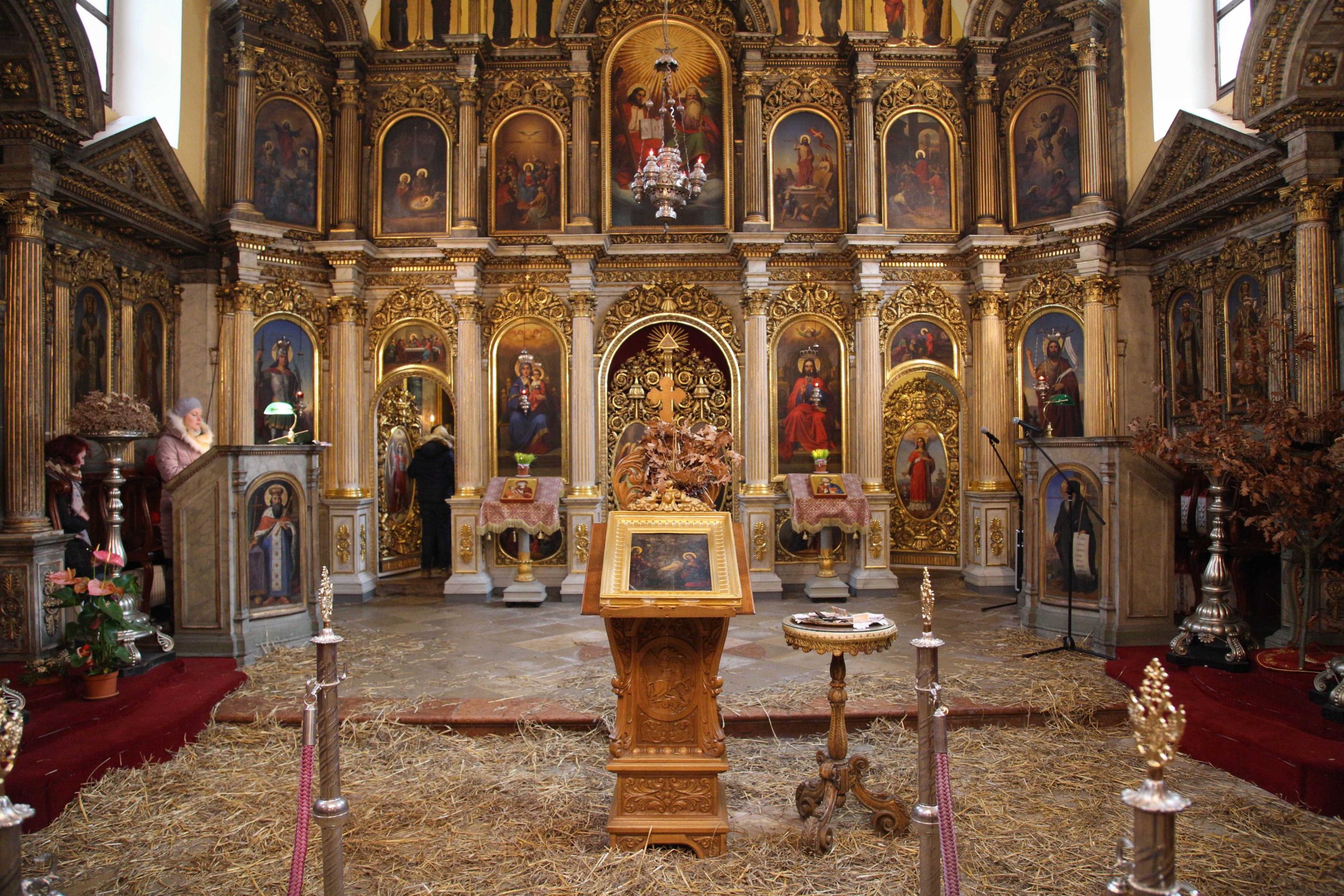
St. George the Martyr is a Serbian Orthodox church just a few minutes’ walk from the Danube River in Budapest, Hungary. This was a Christmas service which accounts for the hay on the floor.
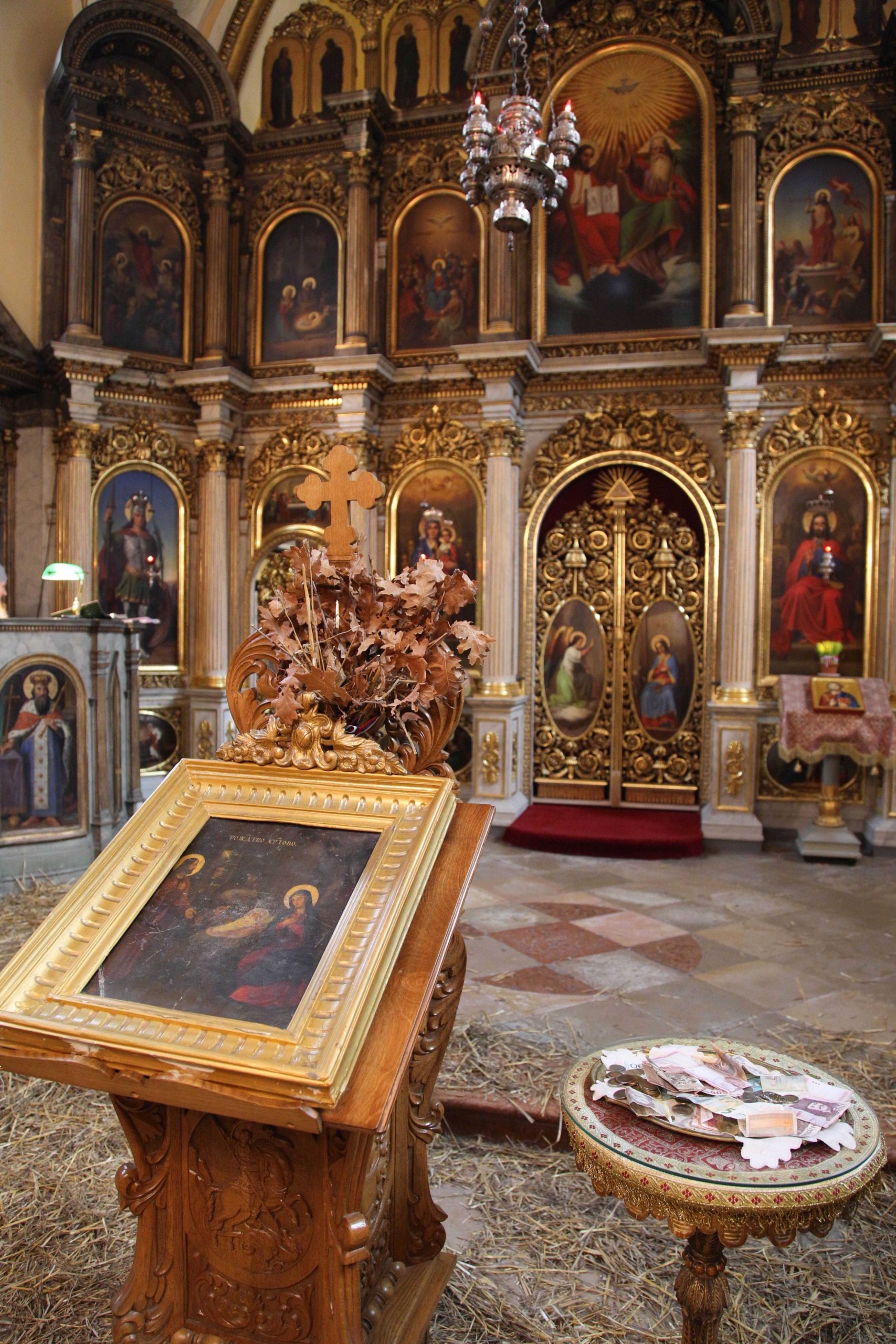
Parishioners have gathered for the morning service, as evidenced by the small contributions left on the table next to the image where church members pause, bless themselves, kiss the image, and leave a small donation.
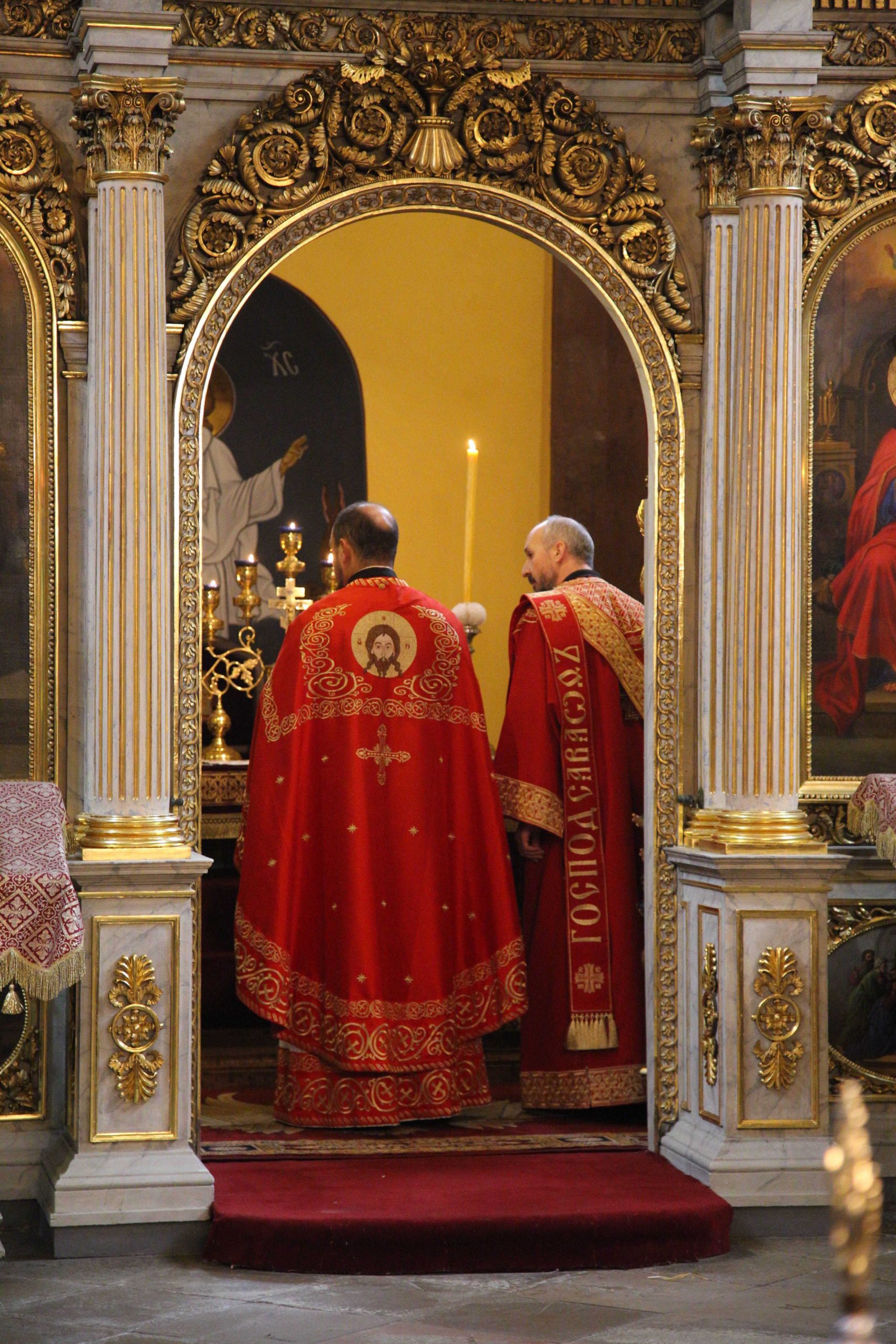
The twin doors have been opened, and during this part of the service the priests stand at the altar.

As one priest carries out his duties at the altar, the other priest swings the censer from the chains in his hand. The censer is a metal container that holds the burning incense used during a part of the liturgy.
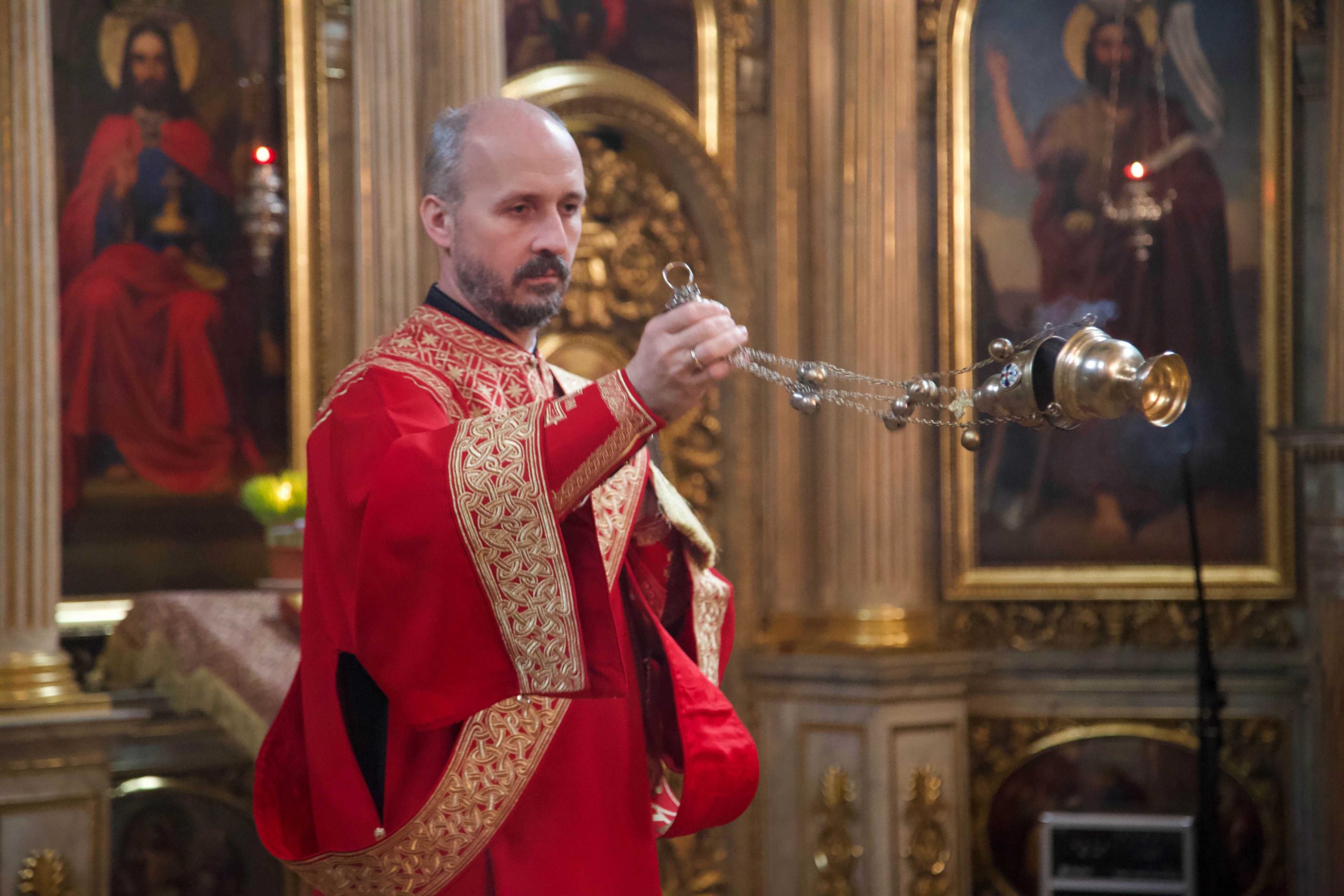
As the priest swings the censer, smoke from the burning incense wafts through the space filling the church with a pleasing aroma. The smoke is also symbolic of the prayers of the faithful rising to heaven.
Faith and love are essential cornerstones of any religion. But all too often there is a clash between church and state as churches seek to thrive and minister to their flock. For more than 250 years St. George the Martyr Church, on the Pest side of the Danube River in Budapest, a modest Serbian Orthodox parish works to carry out its mission and attract new members. But changing political climates and pressures from a heavy-handed government in Hungary can make that a challenge.
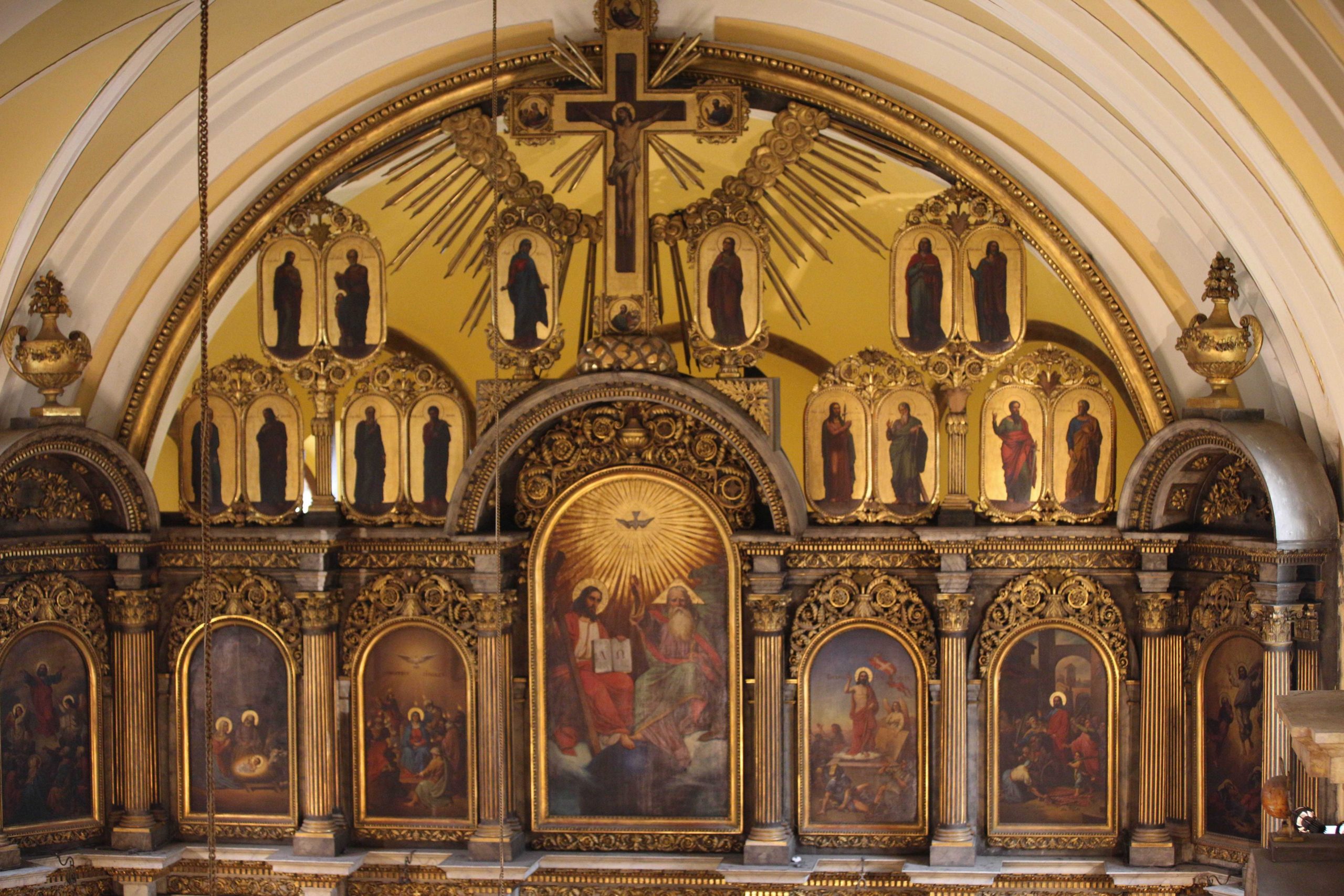
Inside St. George the Martyr are elaborate panels that make up an iconostasis depicting important elements of the Orthodox faith. This is a closer view of the upper half of the iconostasis.

The elaborate iconostasis has recently been cleaned, showcasing the imagery and detail of the stories of the church. The twin doors, lower center, are opened during part of the service to reveal an altar where the priests conduct part of the liturgy.
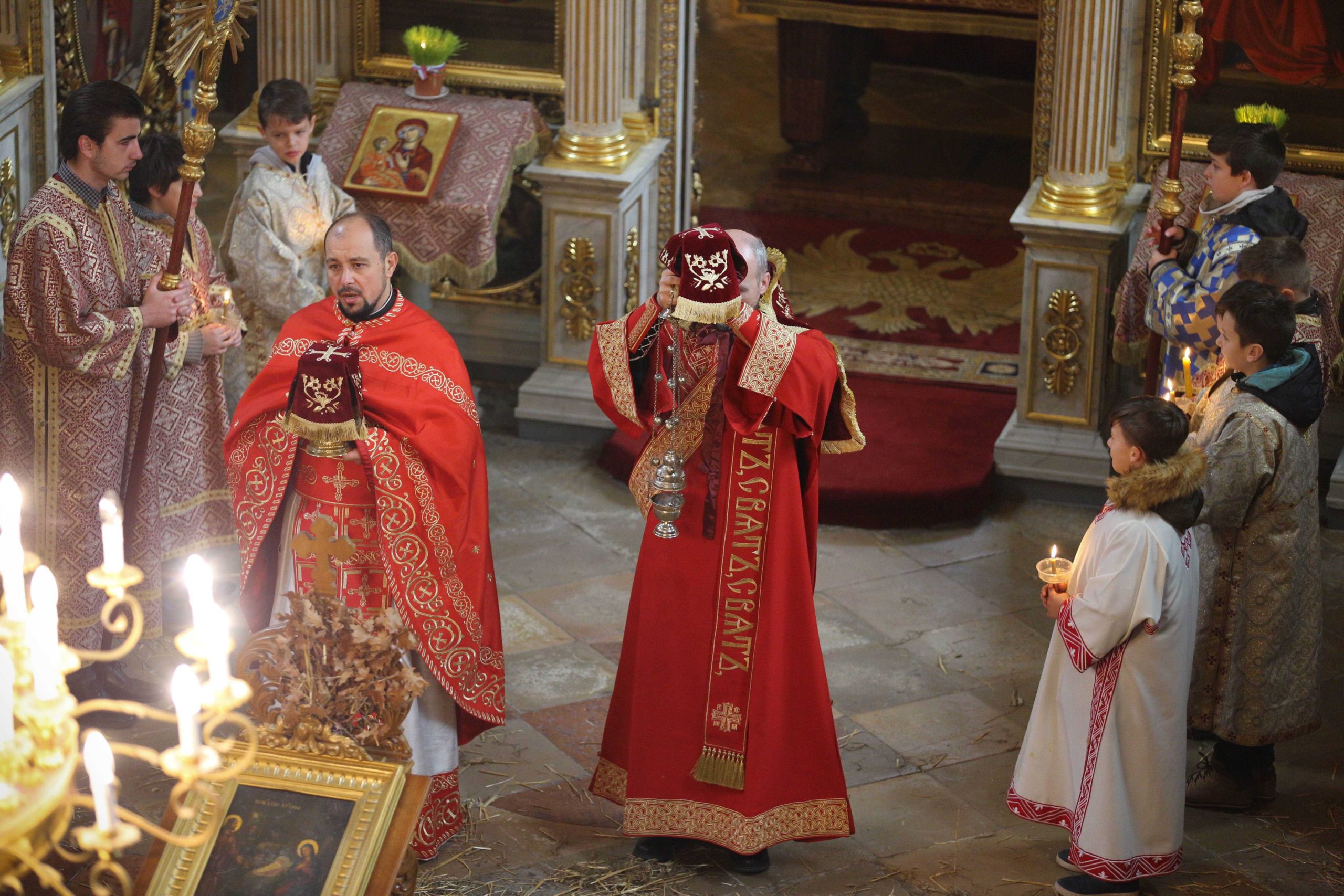
Flanked by acolytes, the priests present containers holding communion that will be given to those who wish to receive it. In the Orthodox faith, the bread and wine of communion are served together and it is an important part of the liturgy that symbolizes the body and blood of Christ.
Throughout history, Hungary’s relationship with religion has been complicated. Her location in Eastern Europe places her in a spiritual vortex of Western and Eastern Christians, Jews, and Muslims. But in 1000 A.D. Western Christianity gained primacy when Hungary became a nation and Stephen was crowned king and recognized as the sovereign by Pope Sylvester II. (In 1083 Pope Gregory VII canonized Stephen and he was elevated to a saint.)

Parishoners are gathered for a Christmas-time service at the church as the priest leads them in worship in front of the iconostasis.
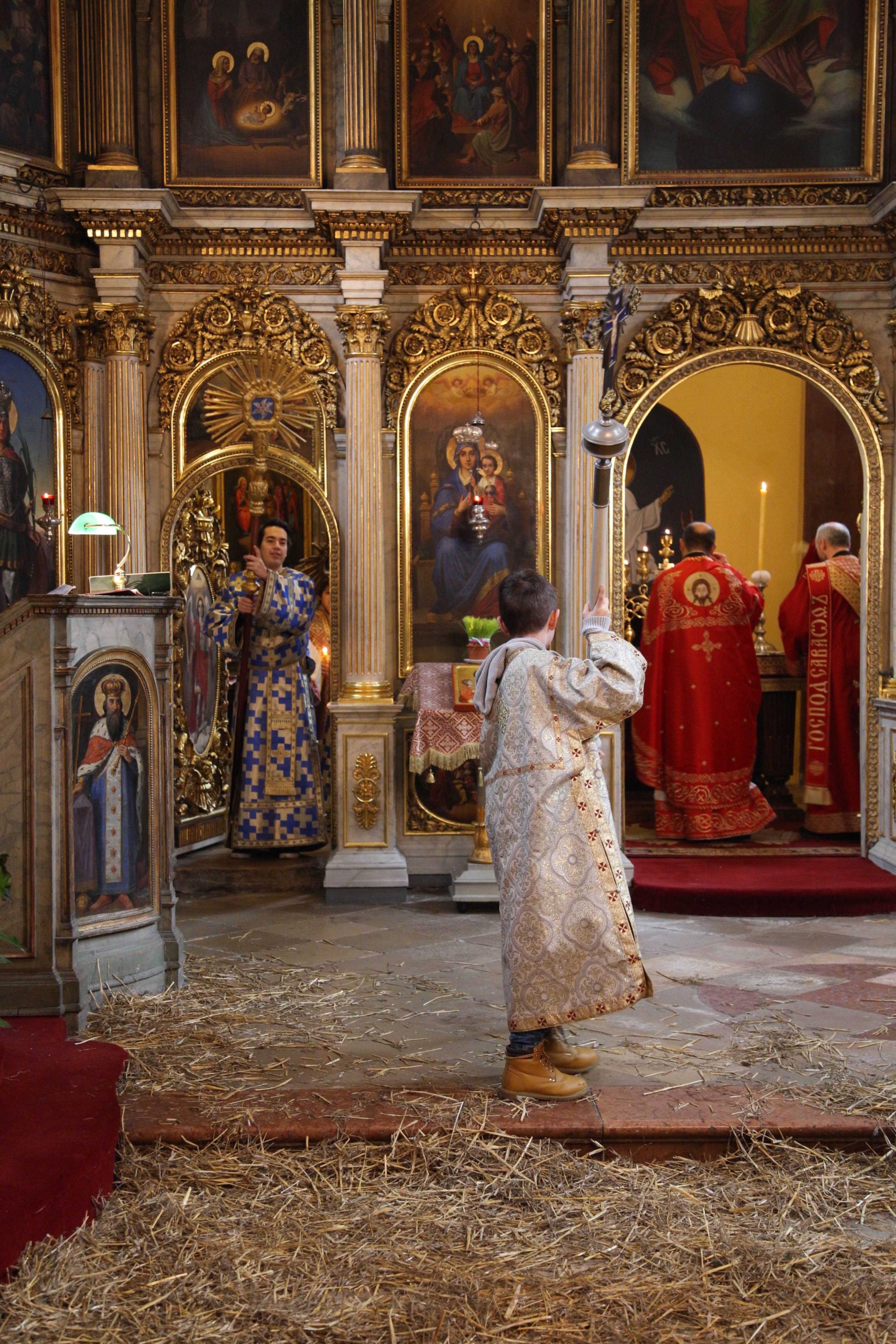
Acolytes serve important functions as part of the liturgy. The bring out holy elements of the church, such as the crucifix, center right, and the ripidion, being brought through the entryway.

One of the parish priests at St. George the Martyr leads the congregation during the liturgical service.
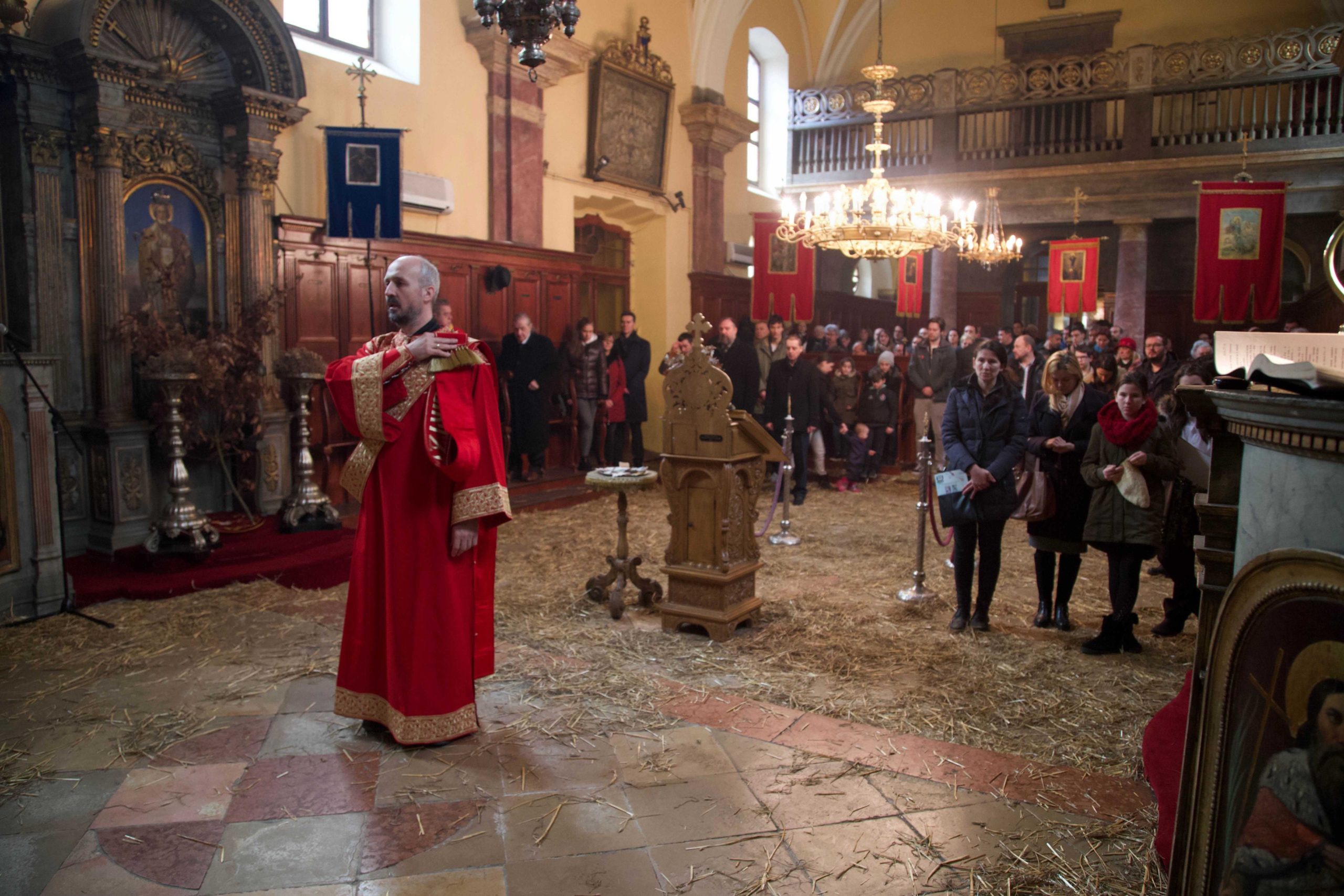
An important element in the Orthodox religion is the liturgy is normally conducted with two priests, each with their own role and responsibility.

A small group of men and women act as the choir and stand off to the side, quietly waiting for the time when their voices are needed.
Despite the popularity of Christianity in Hungary there were times other faiths had a presence in Hungary. For example, Muslims were active in Hungary from the 11th through 13th centuries, during the 15th Century, and also in the 17th Century. In those latter two periods the Ottoman Empire was ascendant but eventually the Muslim faith waned. Prior to the early 20th Century Jews comprised around five percent of Hungary’s population (and nearly 25 percent of the population of Budapest). The Serbian Christian Orthodox church (which St. George the Martyr practices), has the fewest members in modern Hungary.
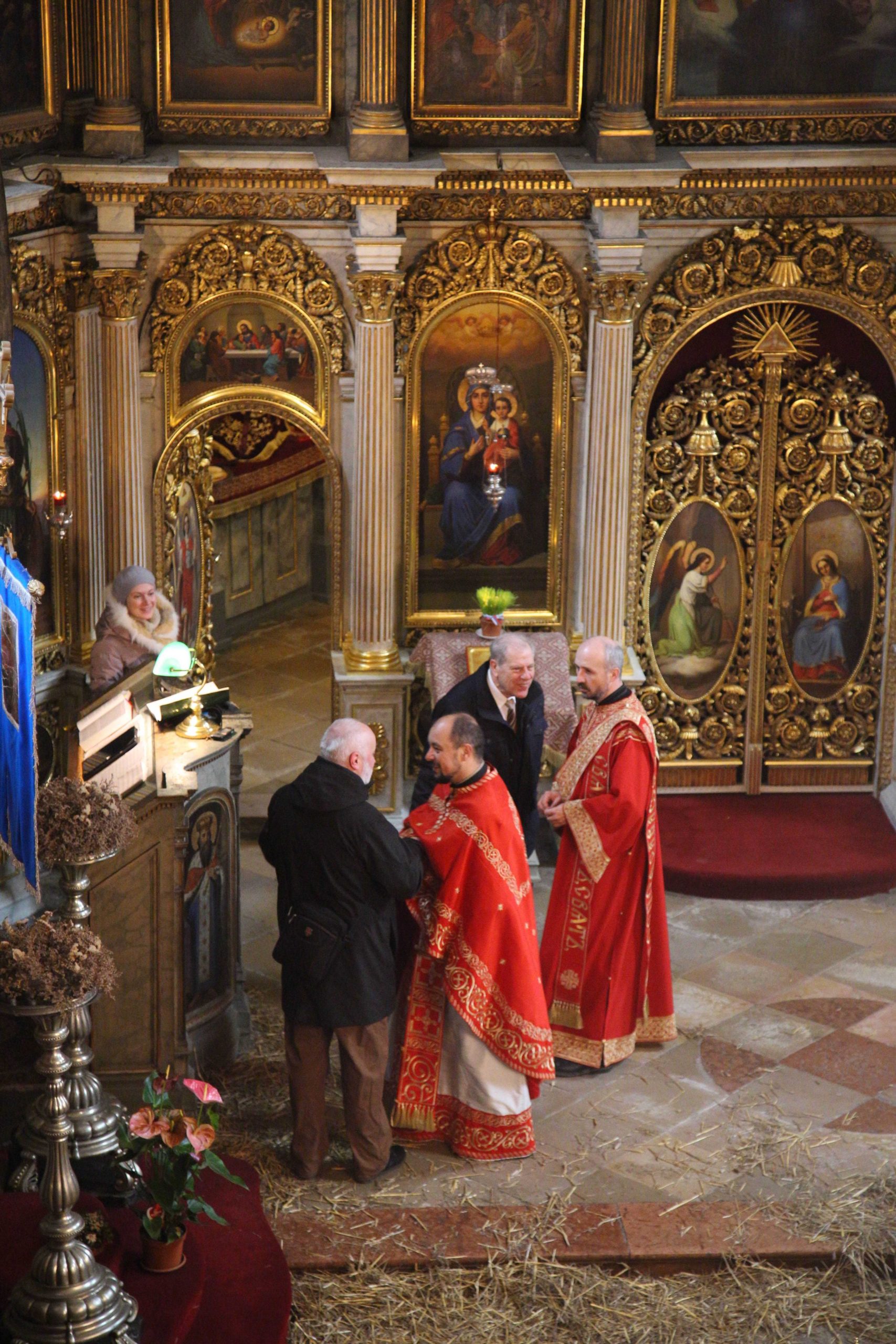
Prior to the worship service, the priests and members of the congregation greet each other and enjoy a few words.
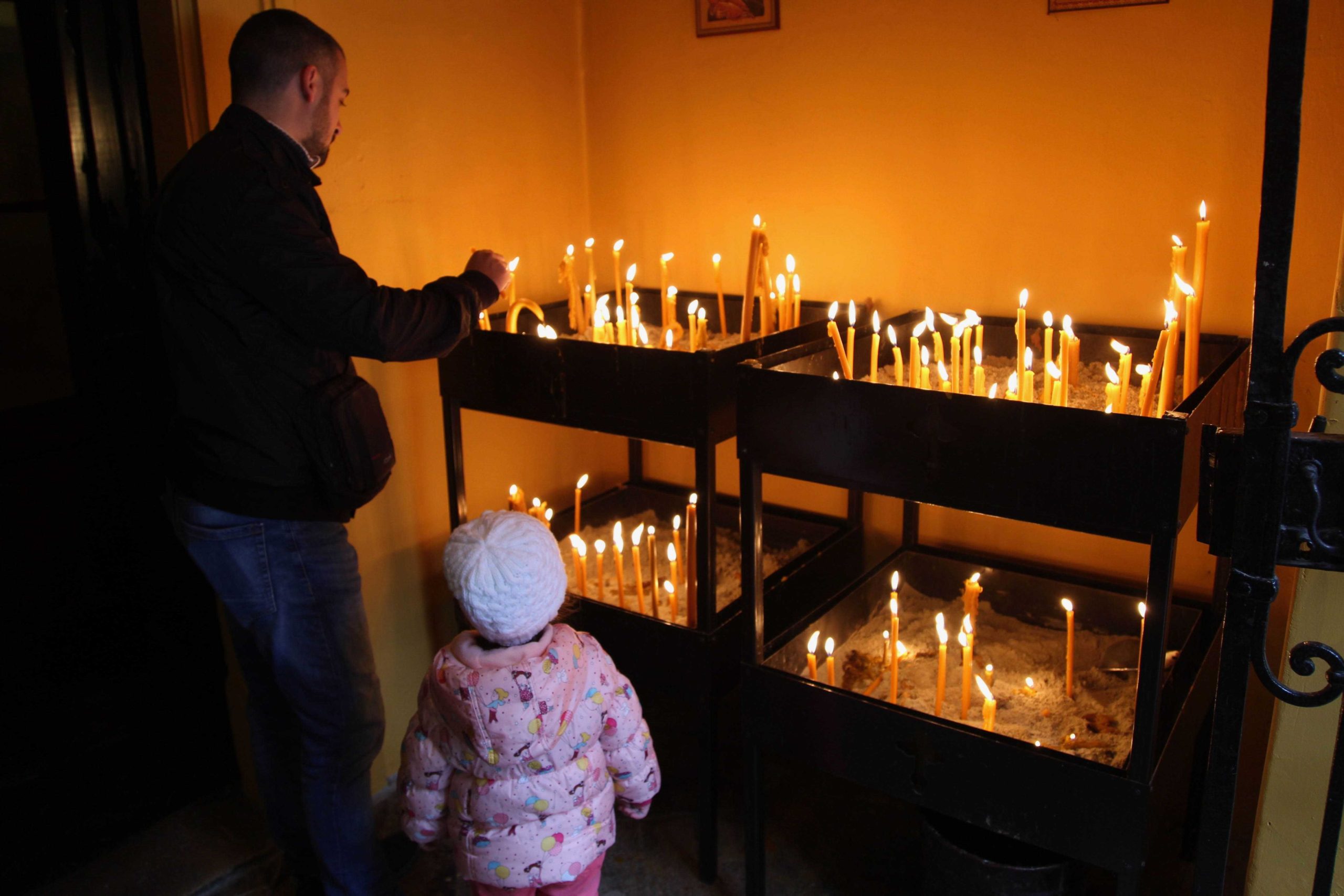
A parishioner and his daughter pause in a small vestibule, just inside the entrance at St. George the Martyr Church to light candles of remembrance. Traditionally, candles placed on the upper level are intended as tribute for those still living, and the lower level is meant to honor those who have passed away.

The liturgy is conducted in a calm, soothing manner, without hurry or bombast. Here a priest stands in front of the closed twin doors of the inconostasis and holds up his sash as part of the service.
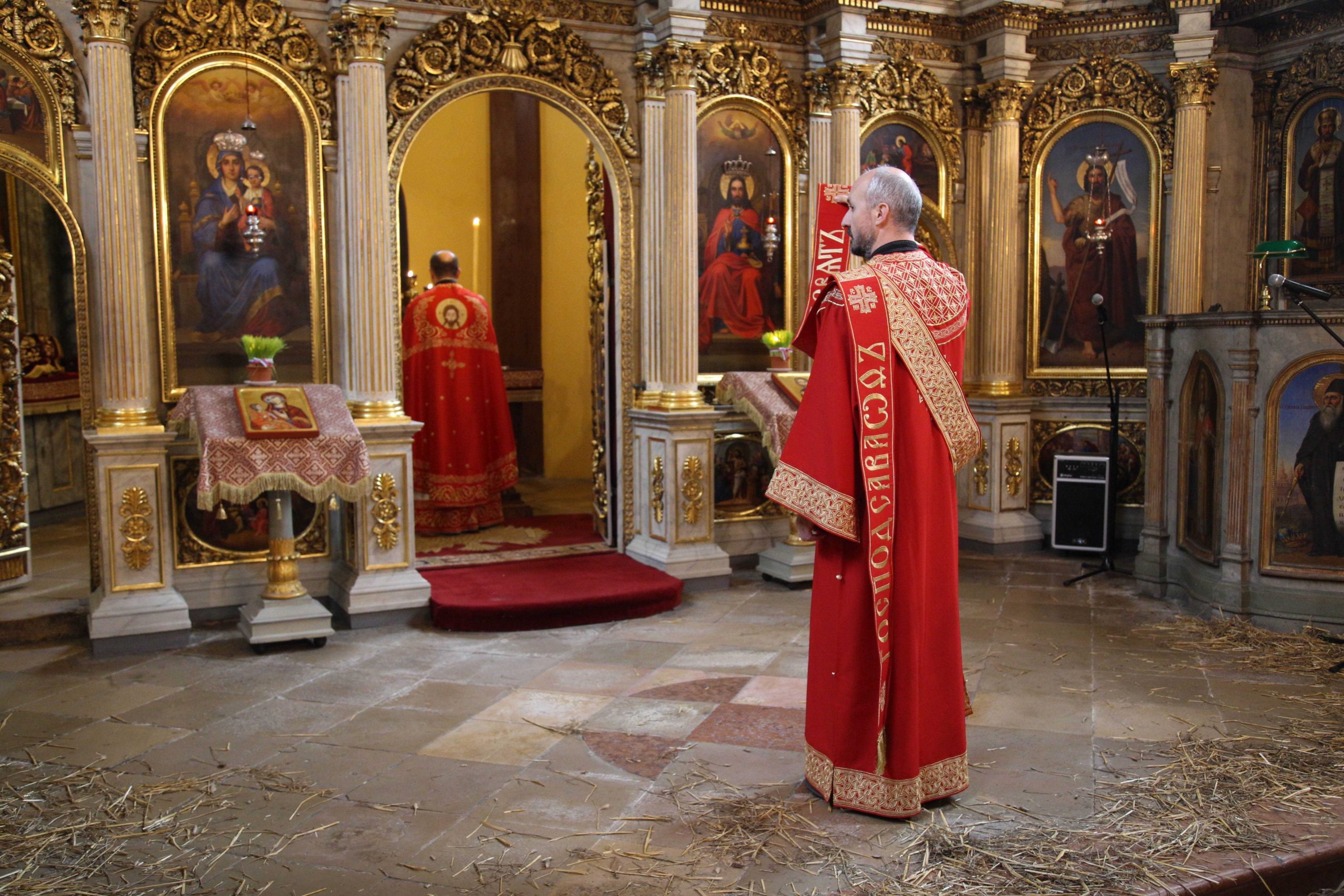
The twin doors, now opened, reveal the other priest at the altar, preparing for the next part of the liturgy.

Like all services of devotion, the priests at St. George the Martyr carry out their duties with grace and solemnity.
To further highlight the complicated nature of religion in Hungary, the tolerance and safety of Jews there was threatened as a result of several major events. In World War I Hungary allied with Germany, and as punishment for losing, the once-sprawling nation of the Magyars was splintered. According to the terms of the Treaty of Trianon, prized assets (a large part of land, direct access to the Adriatic Sea, a significant portion of the population, along with natural resources and manufacturing sectors), were handed over to five other countries. For the hollowed-out nation left behind, economic and social upheaval made persecuting Jews a convenient cudgel. Many Jews fled to places like the United States during this time. In World War II, Hungary’s fascist Arrow Cross party was allied and actively collaborated with German Nazis. As a result, the Hungarian Jewish population was decimated from a pre-war cohort of approximately 800,000 down to around 200,000.

As the services gets underway, young boys who assist the priests lead the way out from the anteroom as one of the priests holds the book of scripture in the air for all to see.

It is an honor to serve as an acolyte, and these lads are carried out their duties quite well. But like all boys, that can become distracted at times.
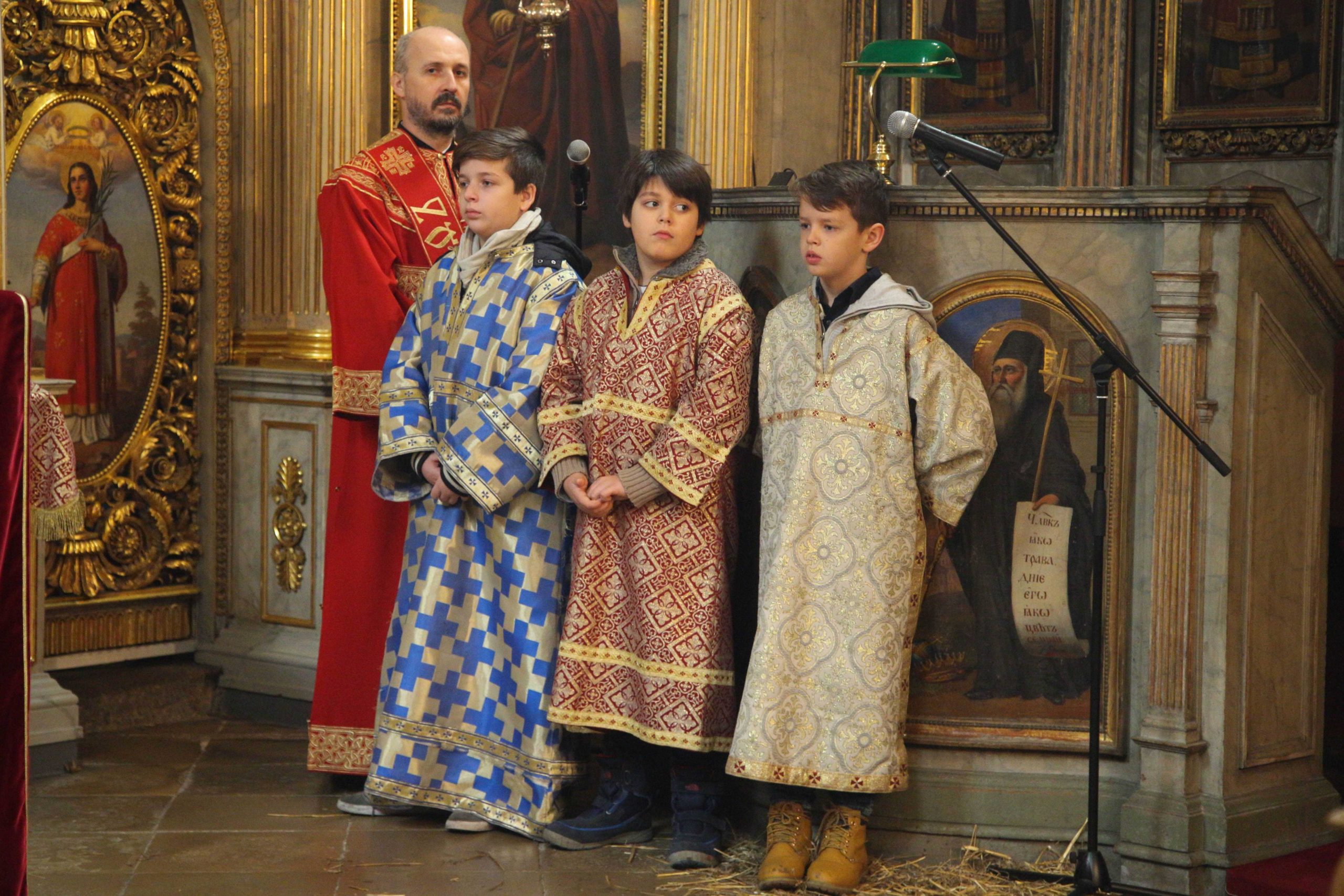
As a priest in the background keeps a watchful eye, this group of acolytes shows a momentary lapse in concentration.
But more recent assaults on organized religions would continue during nearly 40 years of Communist oppression in Hungary. Moscow’s rule over the Warsaw Pact nations crumbled and Hungary held free elections in May 1990, declaring itself as the Third Republic. Additionally, the present constitution proclaims Hungary as a Christian nation. A majority of the population claims Christian faith and the majority of them are Roman Catholic, Calvinist, and Greek Catholic. The smallest sect of Christians in Hungary is Orthodox and they comprise about 0.1 of percent of those who claim a faith. (There are dozens of Orthodox faiths throughout the world, including Greek, Oriental, Serbian, Estonian, Polish, Georgian, Albanian, and a number of others.) A few major differences between Eastern Christians and Western Christians (including Roman Catholics), are over the authority and infallibility of the Pope, and the Catholic inclusion of venerating the Son of God – Jesus Christ – as part of the Holy Trinity. Orthodoxy considers that notion undervalues the importance of God, and Catholics suggest it properly values the important of the Trinity. Orthodoxy sees a closer relationship between heaven and earth, and Western Christians see them as a bit further separated, with earth being the mortal plane and heaven being a place to attain for those who have lived a pious life.
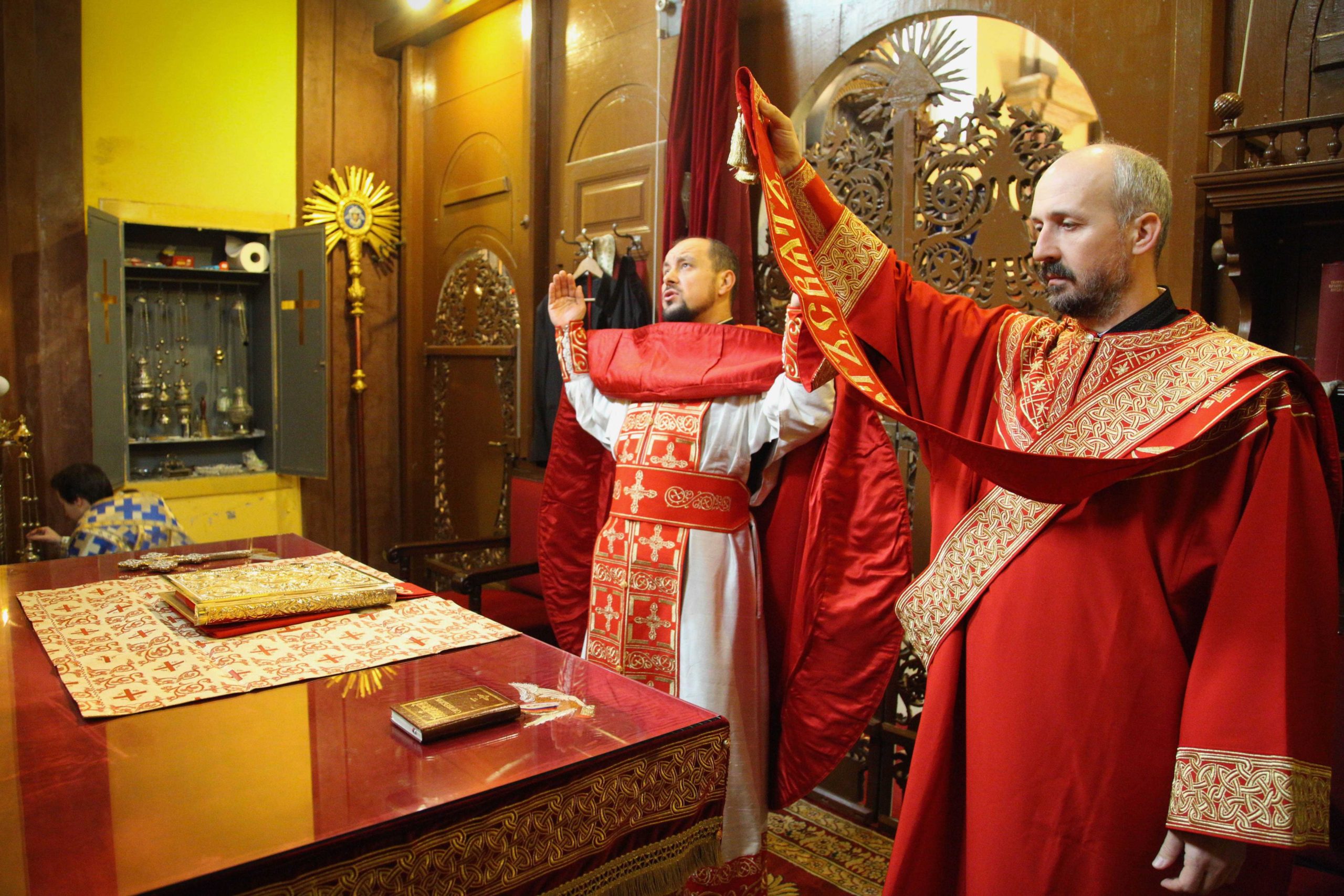
There is always more than one priest who leads the congregation in service. The elaborate vestments worn by each of these two is a statement of their stature within the church.

St. George the Martyr Church in a central part of District V in the Pest area of Budapest is an important house of worship for the members of this Serbian Orthodox church.
Despite the recent upheavals of history, the congregation of St. George the Martyr thrives. The church’s present building was constructed beginning in 1759 and completed in 1761. Surrounded by a high wall, the church is a mixture of baroque and rococo styles with a bell tower 55 meters tall. From the exterior the building is a pleasing, modest work of architecture. But step inside and one is struck by the artistry and dizzying examples of Orthodox Christian symbology. One of the main interior features is a highly detailed and beautiful iconostasis. The interior of the church was reconditioned in the late 2010’s.
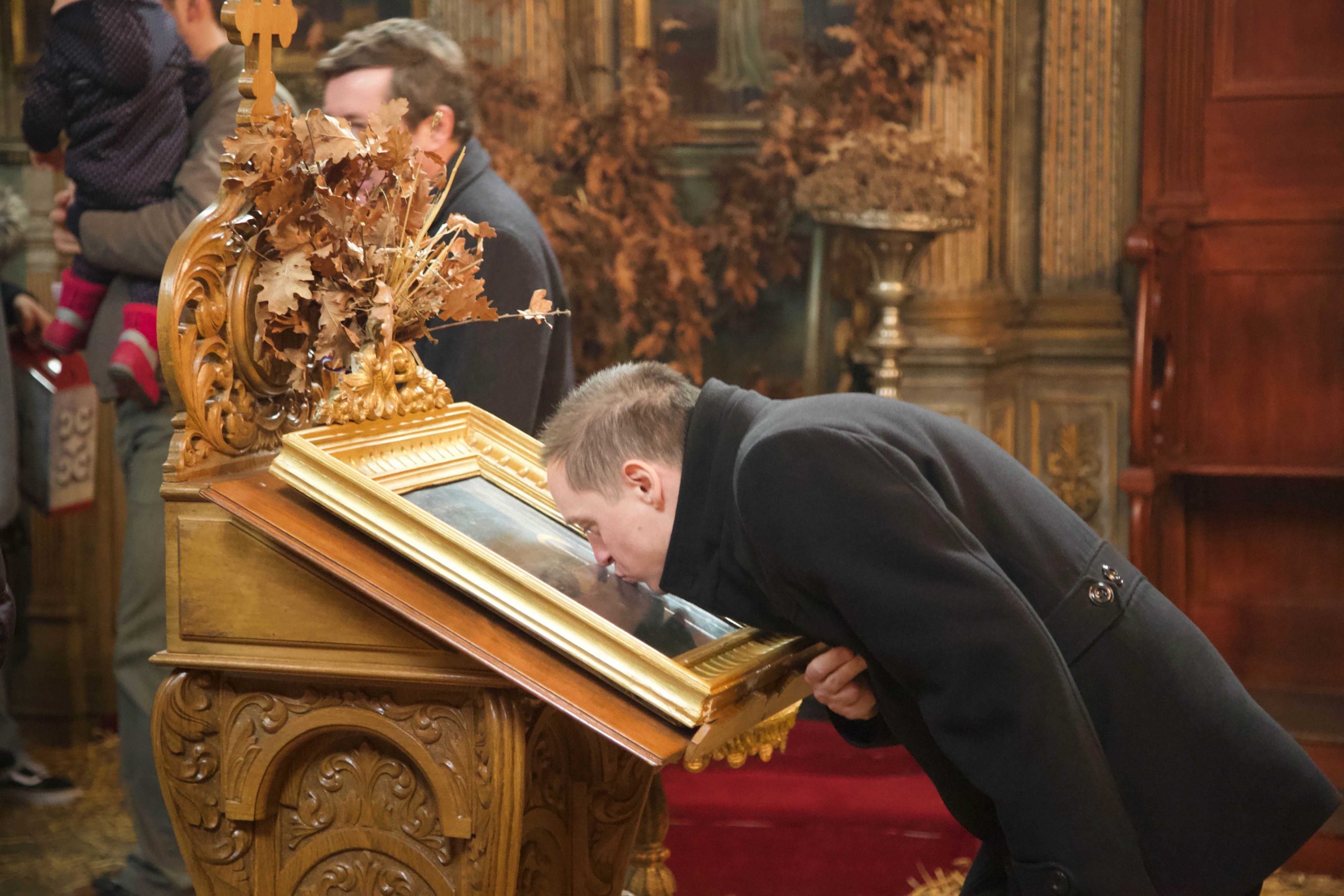
As each parishioner enters St. George the Martyr, it is a common practice to stop at the framed painting located in the center of the church, pause and gently kiss the image in reverence.
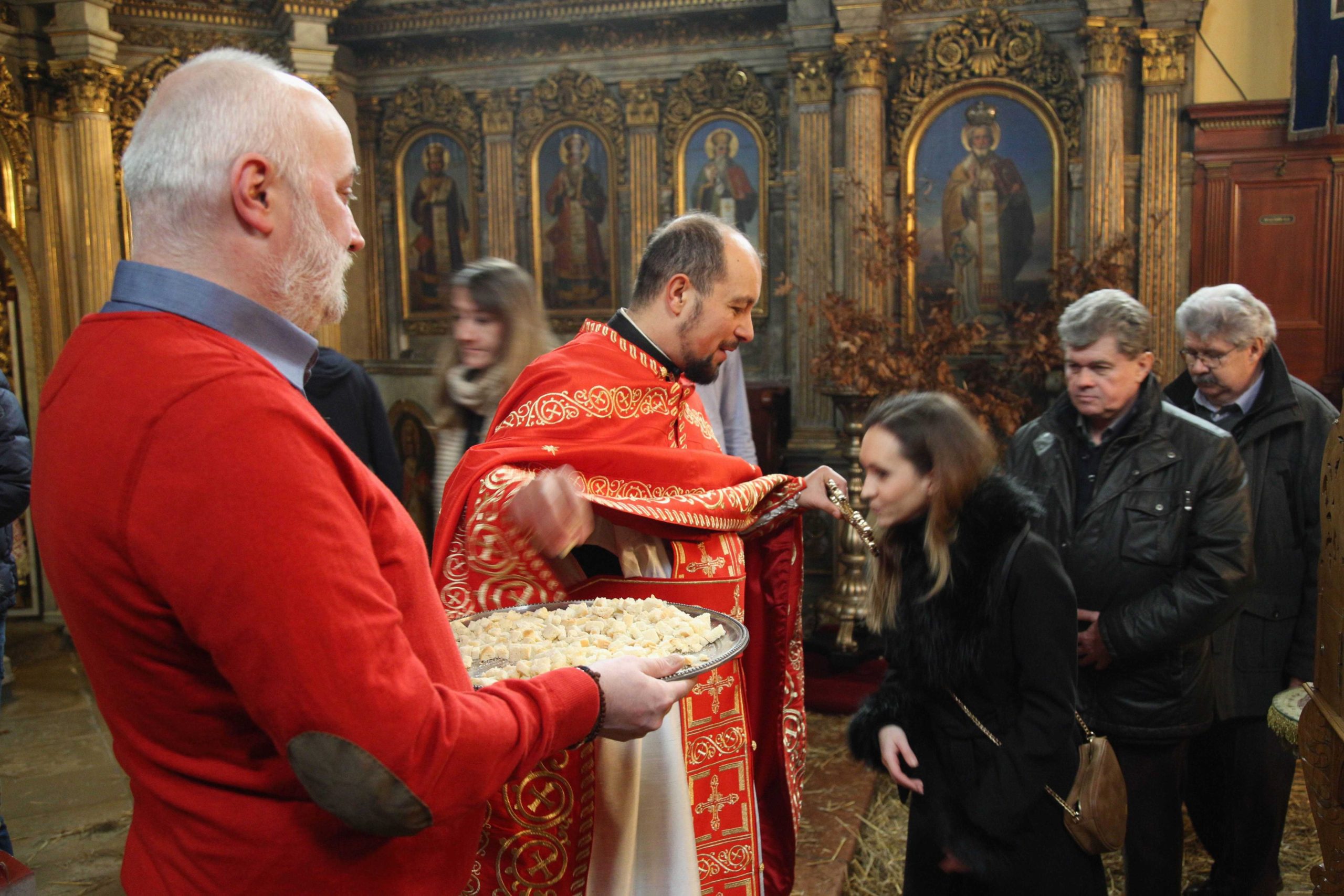
The priest serves communion to a parishioner as others wait their turn to receive the sacrament.
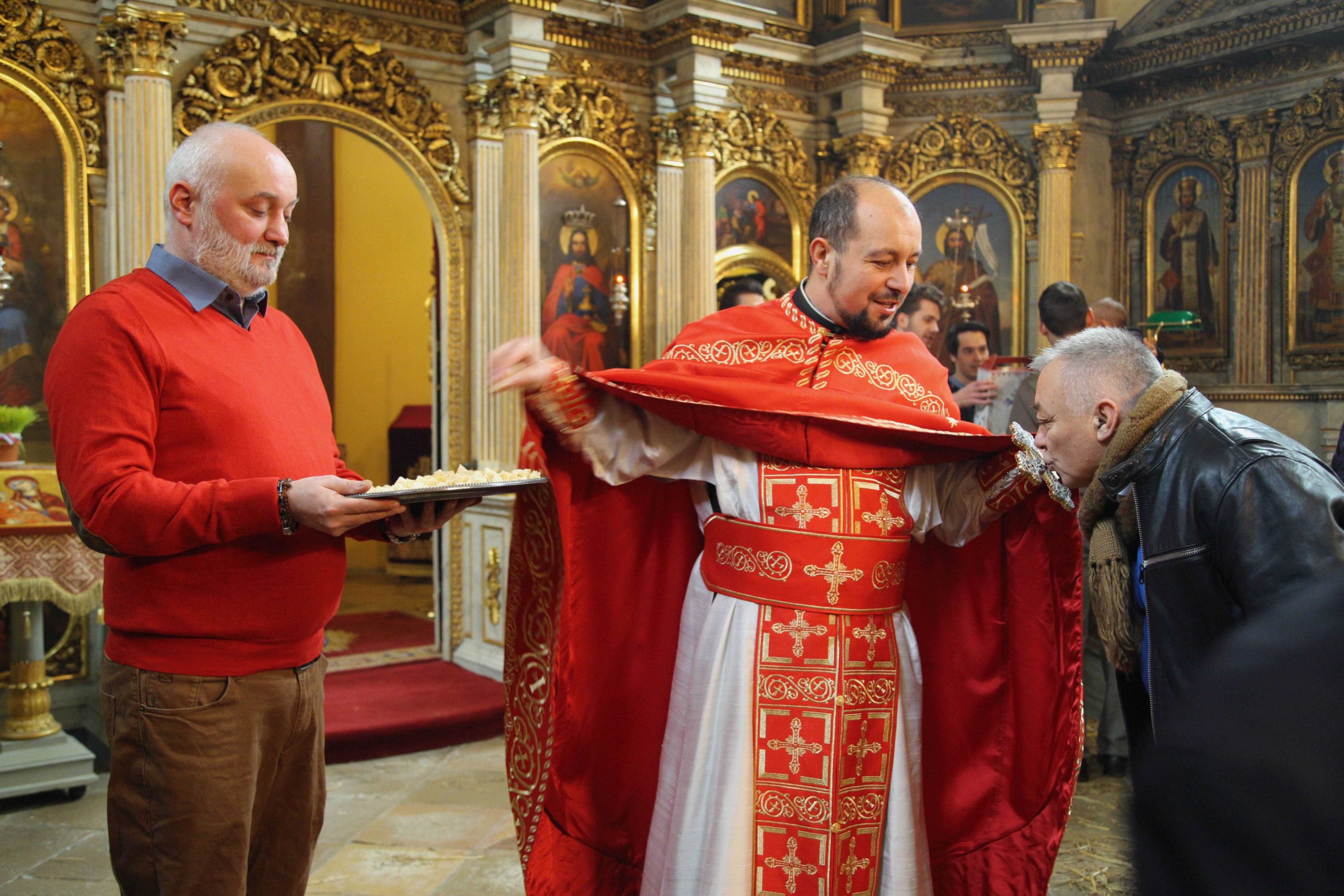
Taking communion is an important part of being a member of the church and participating in the service.
Set prominently in the middle of the church floor on a pedestal at St. George the Martyr is a painting in a gold frame of the Virgin Mary with a halo surrounding her head, a swaddled infant, and a bearded man adorned with a golden halo. The common practice is for parishioners to approach the image, bow and gently kiss the glass in devotion. The church service is conducted by a pair of priests wearing beautifully-adorned vestments. The doorway of the iconostasis is opened during the worship service and parts of the service are conducted at an altar normally hidden by the iconostasis, and at a lectern in front. Much of service and delivery of the liturgy by the priests is conveyed to the congregation in the form of chanting and singing. A small cadre of boys serve as attendants to the priests and the congregants. A small choir of men and women offer up hymns during portions of the service. Other elements of worship include processions, taking of communion, the use of candles, bells, incense, and the display of icons and relics.

A young boy is encouraged to open wide as the priest serves communion.

After the congregation has been given communion, the ornately robed acolytes take their turn.
For many people, religion is a sustenance of faith, hope, love, and charity. Throughout history, the simple act of practicing religion took bravery and showed defiance to intolerant governments. And in a world filled with injustice, those virtues are more important than ever. Thanks to the efforts of churches like St. George the Martyr in Budapest, the nation of Hungary, and the world as a whole is a better, more blessed place.
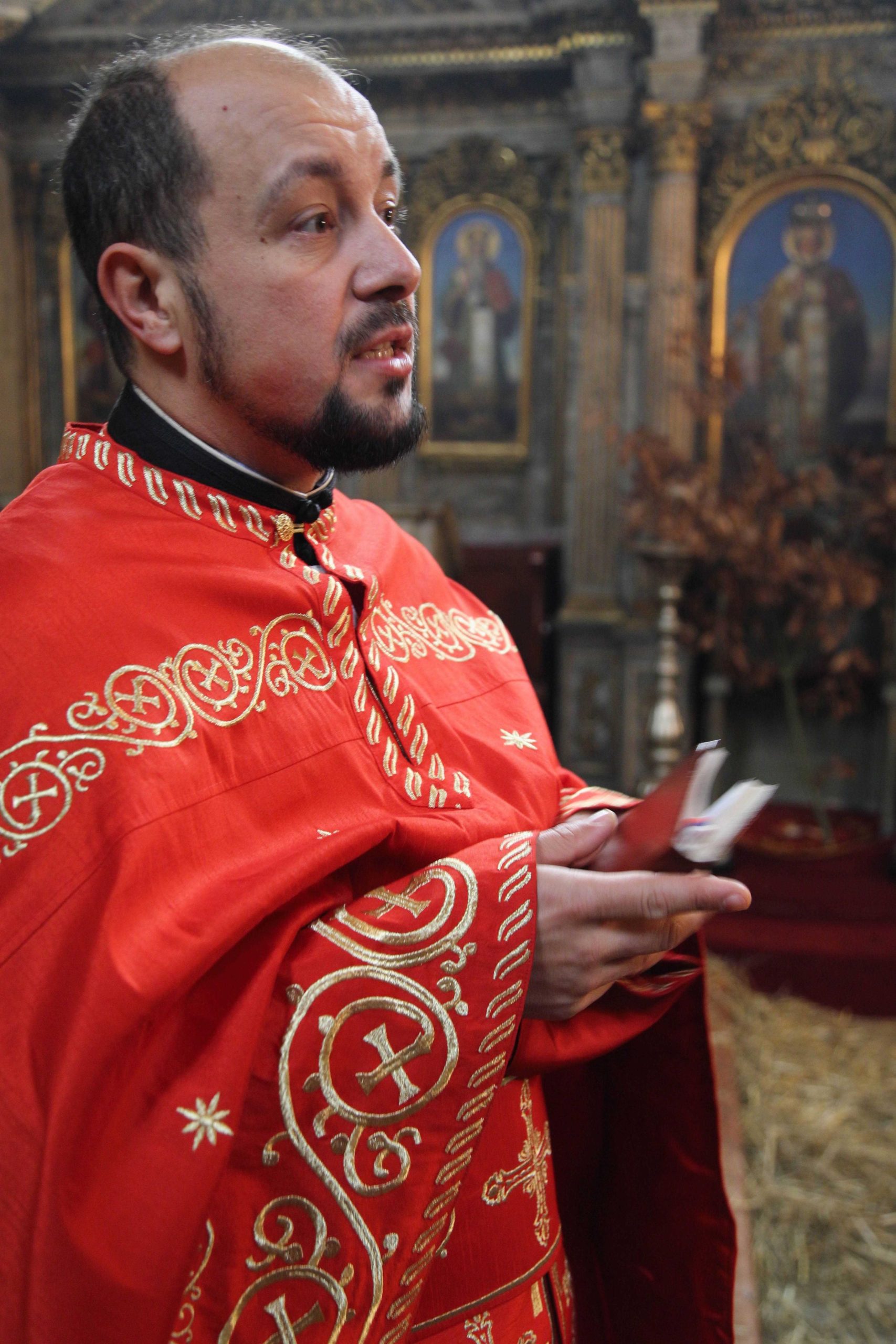
The priest shares the Word with members of the church.
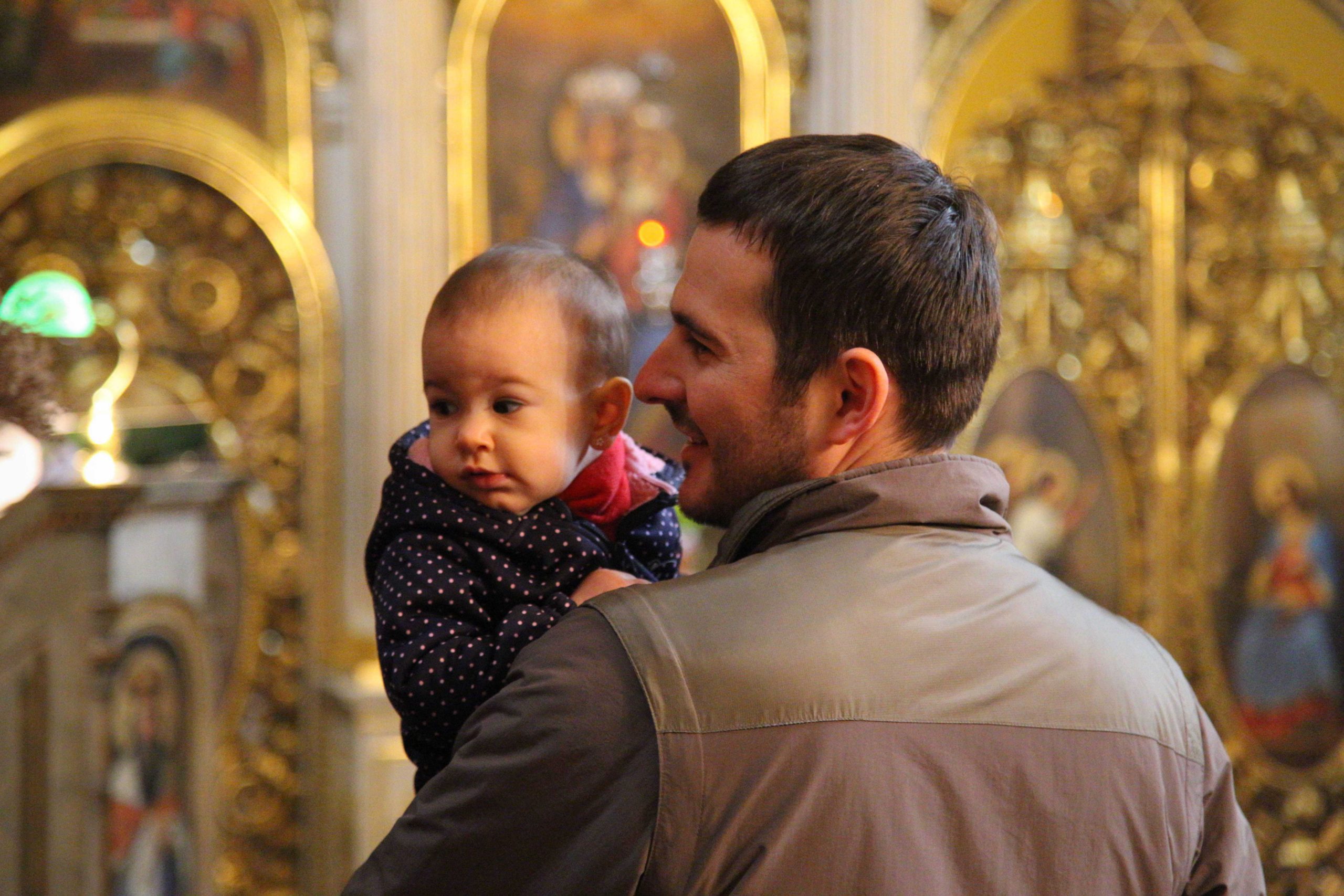
A young father gazes at his infant child as the worship service is conducted at St. George the Martyr Church. Attracting new members is an ongoing job for all churches, if they are to thrive.

Following this church service, held during the Christmas season, a small presentation by young people comemmerates a moment of history.
For more information about St. George the Martyr Church, click over to these websites:
wikipedia.org/Religion_in_Hungary
indexmundi.com/hungary/religions
state.gov/HUNGARY-2018-INTERNATIONAL-RELIGIOUS-FREEDOM-REPORT
euronews.com/how-world-war-ii-shaped-modern-hungary
britannica.com/Hungary/History
wikipedia.org/History_of_Hungary_before_the_Hungarian_Conquest
